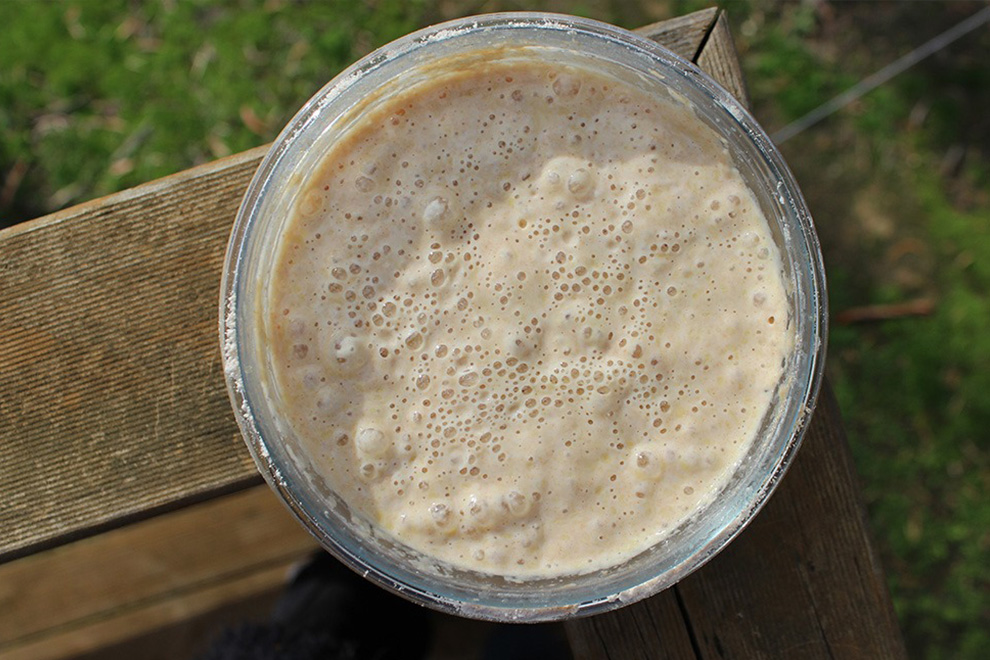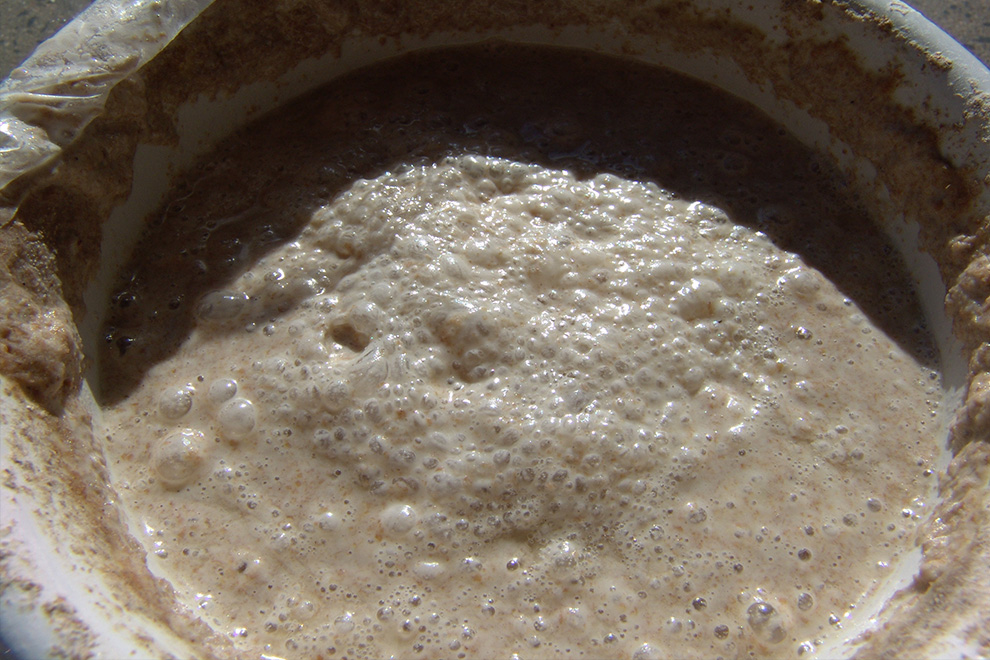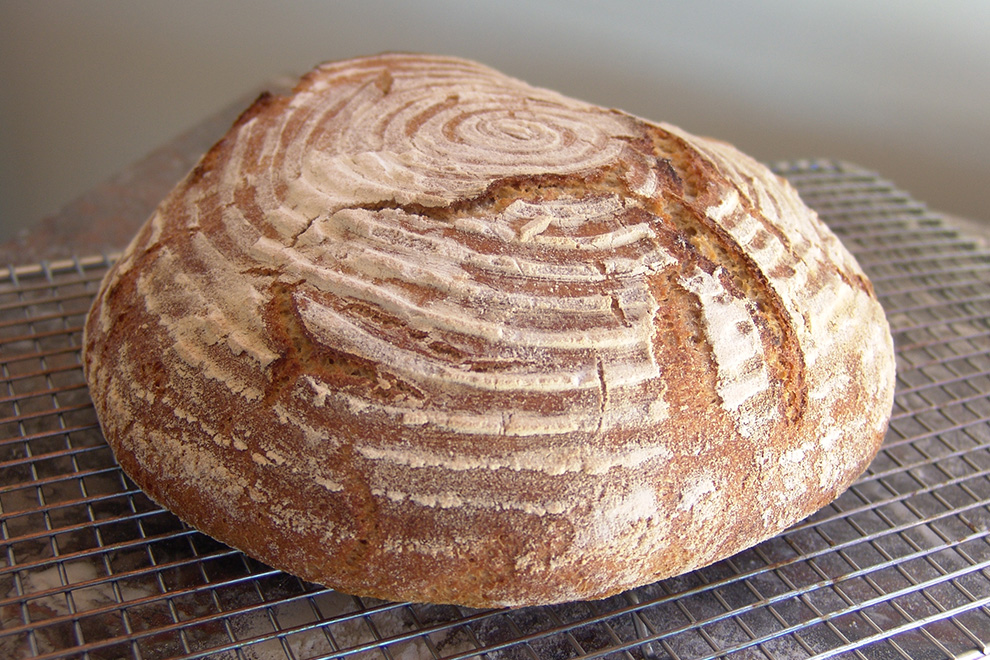A Jamie Oliver recipe:

DAY 1.
Mix 150g strong white bread flour. Add 200ml warm water and mix well with your hands until combined, and there are no dry clumps of flour. Using a rubber spatula, transfer the mixture into a clean, clear container with enough room for the mixture to double in size.
Make a note of the level of the mixture (you could slip a rubber band over the jar to mark the current height of the dough.). Check the smell, too. It should be light and floury with an almost milky sweetness. Cover loosely with a lid, or a piece of muslin, and store in a warm, draught-free place for 24 hours.
DAY 2
Remove the lid of your container and look for signs of fermentation. There may be one or two bubbles on the surface or down the side of the container. The dough should have lost some of its milky smell and it should start to smell a little acidic. Cover again and return to a warm place for another 24 hours.

DAY 3
Remove the lid of the container and check again for signs of fermentation. The surface of your mixture should have plenty of bubbles. It may have increased in volume and should now have an acidic, almost rancid smell. This is a sign that your starter has fermented and is ready for a feed.
FEEDING THE STARTER
This process of discarding some of the mother and incorporating new flour and water is called ‘feeding’ the starter.
Discard all but 50g of your sourdough starter (this discarded starter can be kept in the fridge and added to pancake batters or used to make crumpets). Add the remaining sourdough starter to a bowl with 100ml warm water and 100g strong white bread flour. Mix with your hands until completely combined and then return to your original container, adjusting your marker to reflect the new level of the mixture. Cover and return to a warm place for another 24 hours.
DAY 4
The following day, your starter should continue to show signs of fermentation, perhaps doubling in size within the container and producing a similar acidic smell. There should be plenty of bubbles on the surface, too. Repeat the same feeding process of discarding all but 50g of your starter and replacing with new flour and water. Cover and return to a warm place for another 24 hours. Continue this feeding process every 24 hours for another 3 days. If your starter is not showing signs of fermentation, simply leave it to stand in a warm place until it does. Do not continue to feed it anyway.
On the fifth day of feeding, once your starter is consistently showing signs of fermentation 24 hours after being fed, it is ready to use.
